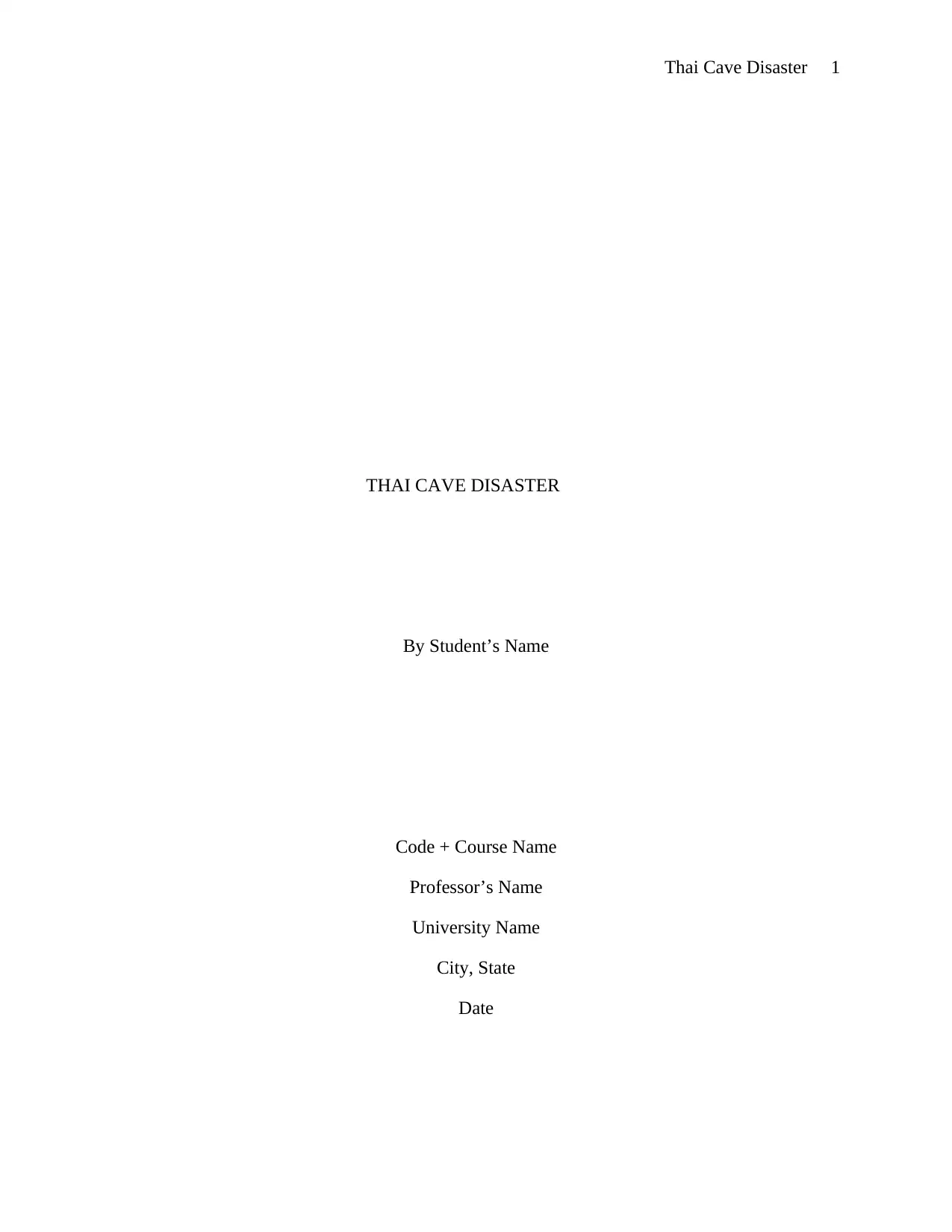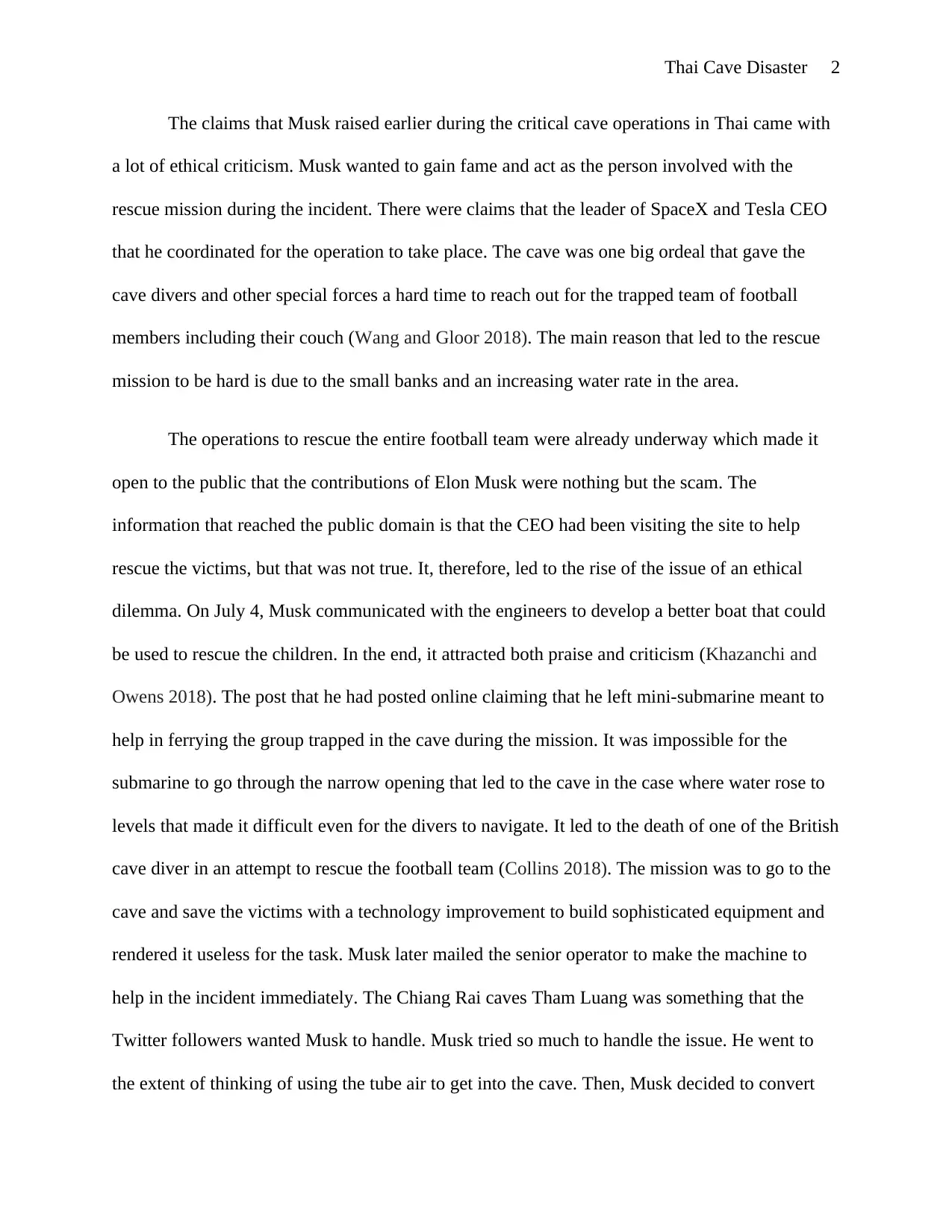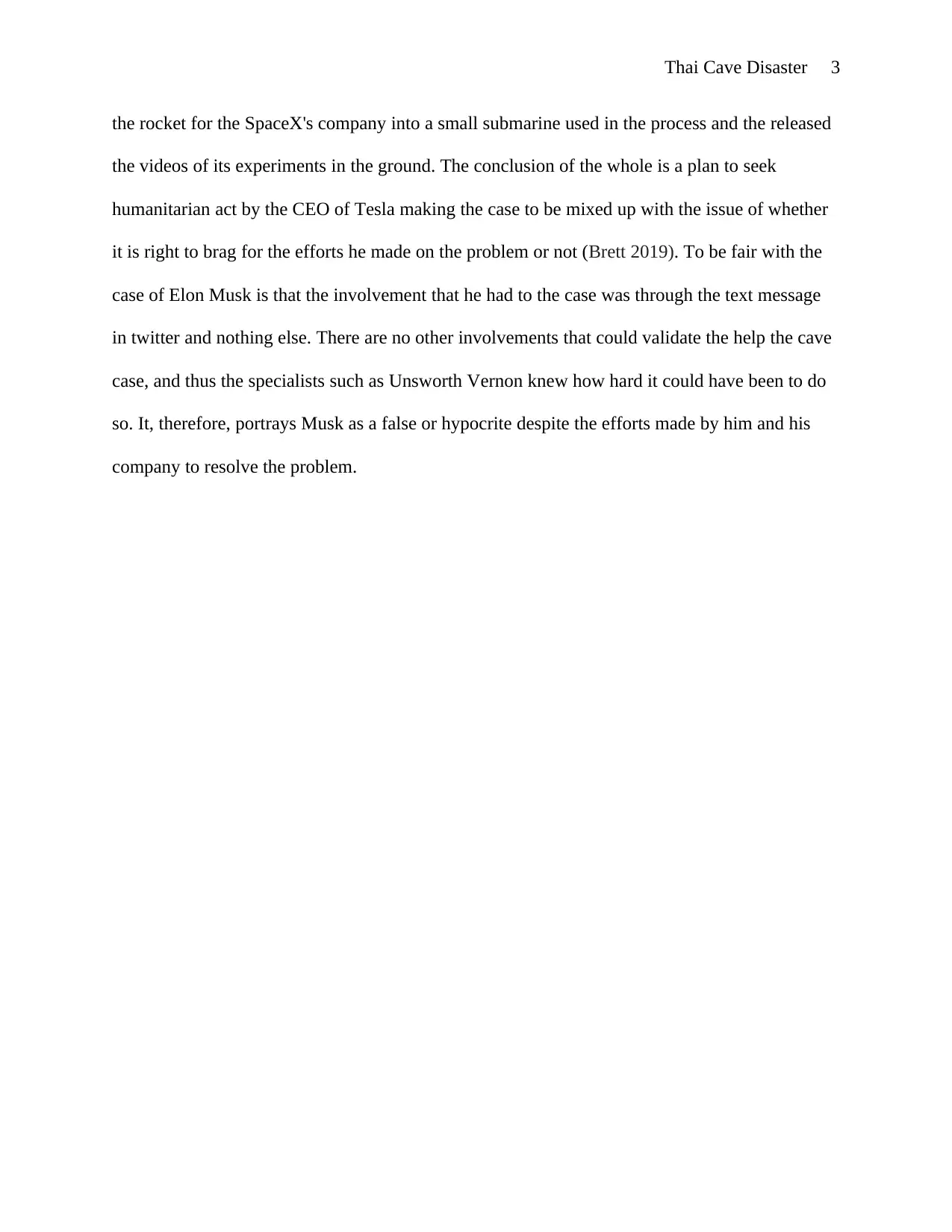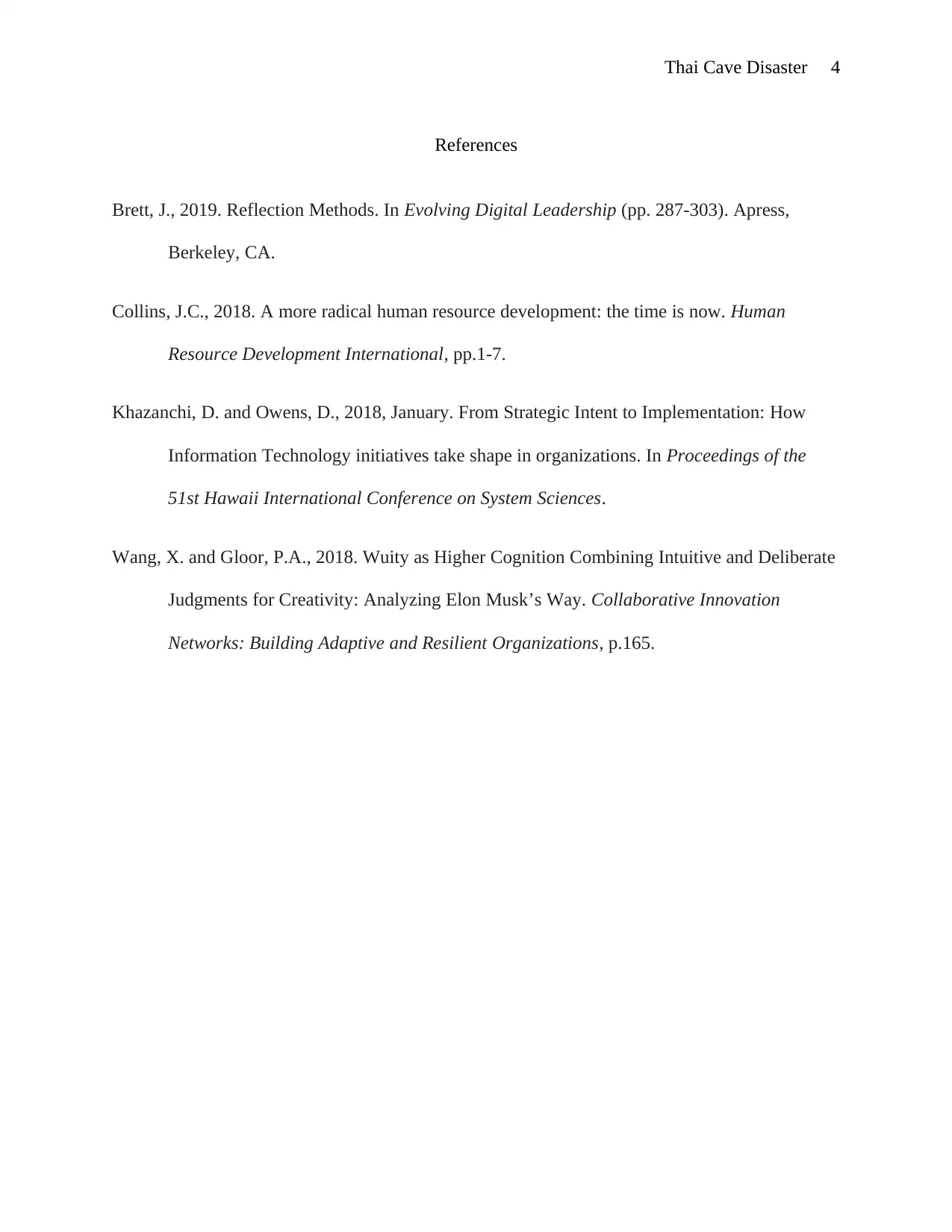A Leadership Case Study: Elon Musk and the Thai Cave Rescue Mission
VerifiedAdded on 2023/06/04
|4
|756
|267
Case Study
AI Summary
This case study examines the ethical implications of Elon Musk's involvement in the Thai cave rescue operation in Thailand. It discusses the criticisms Musk faced regarding his intentions and the actual impact of his contributions, particularly the mini-submarine. The analysis contrasts Musk's public persona and claims with the practical realities of the rescue mission, highlighting the challenges faced by cave divers and the ultimate ineffectiveness of Musk's proposed solutions. The study also references the negative reactions from specialists involved in the rescue, painting a picture of a complex situation where good intentions were overshadowed by perceptions of self-promotion and a disconnect from the realities on the ground. The case questions whether it is appropriate to promote one's efforts during humanitarian crises, especially when those efforts may not be genuinely helpful.
1 out of 4








![[object Object]](/_next/static/media/star-bottom.7253800d.svg)